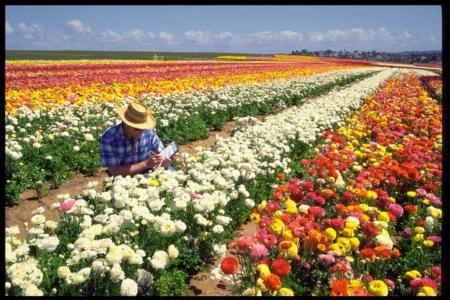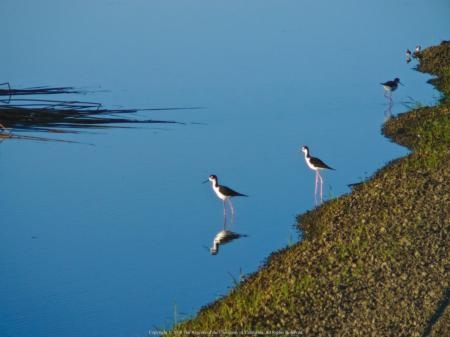
Posts Tagged: Initiative I Energy for the Future
Backyard conservation
The Natural Resource Conservation Service (NRCS) works extensively with the nation’s farmers and ranchers to protect soil, water, air, plant, and animal resources while meeting production goals.
Working with agricultural producers allows NRCS to promote conservation practices approximately 1.4 billion acres of the privately held land in the United States. About 92 million acres of land in our country is tended by home gardeners. In an effort to promote conservation on these lands, NRCS has partnered with other organizations to produce, Backyard Conservation: Bringing Conservation From the Countryside to Your Backyard.
This full-color and informative online resource highlights 10 conservation activities that can be used in your backyard, shared spaces, and public places too.
Topics include:
- Trees add beauty and so much more.
- Trees, shrubs, and other plants can provide homes and food for wildlife.
- A backyard pond will likely become the focal point for all your backyard conservation.
- Wetlands filter excess nutrients, chemicals, and sediment and provide habitat for a host of interesting creatures.
- Composting turns household wastes into valuable fertilizer.
- Mulching cools, protects, and enriches the soil.
- Apply only those nutrients the plants can use. (See our previous post on soil test kits to help you get accurate test results.)
- Terracing makes flower and vegetable gardening possible on steep slopes.
- Drip irrigation and other water conservation practices can save water and money.
- Early detection and treatment of pests means a healthier growing environment.

Backyard Conservation from NRCS can help people create beautiful and healthy environments! Photo from NRCS resource.
Nursery and Floriculture Alliance Education Programs
UC’s Nursery and Floriculture Alliance has many trainings scheduled, including several in Southern California. You can find program details on their website.
Also on the site, you will find archived presentations available for viewing and links to resources to help growers conserve irrigation water and manage water quality issues.
The nursery and floriculture industry is big business in Ventura County. Even after experiencing a decline in sales during the recession, the most recent crop report lists nursery stock as our third highest value crop at $180,057,000 (down from $298,690,000 in 2007-2008). Cut flowers are in the number four spot and brought in $47,348,000 (down from $51,297,000 in 2007-2008).
This map shows where these crops are grown within the county.
May is Water Month
Today Supervisor John Zaragoza will present resolutions proclaiming May 2012 as both “Watershed Awareness” and “Water Awareness” Month.
There are many events being held around the county this month to celebrate. Santa Clara River events can be found in this Ventura County Star article. Ventura River events can be found at the Ventura River Watershed Council website. If you are aware of any other events, please contact our office and we will be happy to include yours in a future post.
Further information about our local watersheds can be found here. Working together we can all improve our water quality and conservation.
Natural resource funding opportunities
The Natural Resources Conservation Service (NRCS) provides many resources for public use. In addition to educational resources, the NRCS has some financial assistance programs available to help eligible landowners and agricultural producers plan and implement conservation practices.
These programs address natural resource concerns and include: saving energy; improving soil, water, plant, air, animal and related resources.
Specific programs include:
- Agricultural management assistance
- Agricultural water enhancement program
- Air quality initiative
- Cooperative conservation partnership initiative
- Conservation innovation grants
- Conservation stewardship program
- Environmental quality incentives program
- Emergency watershed protection program
- Wildlife habitat incentive program
Additional information can be found on the NRCS website, or by contacting your local NRCS office. Program information is also available in Spanish.
Protect Your Drinking Water
Water is essential to life. Clean water supplies require the efforts and cooperation of many. It is our responsibility to learn about this life sustaining natural resource, and take steps to ensure our supply is safe to drink.
The U.S. Environmental Protection Agency (EPA) has an extensive collection of resources to educate the public about drinking water. Titled, Protect Your Drinking Water for Life readers have many topics to explore and a variety to learn about their water supply and takes steps to protect it.
Topics include:
- Drinking water
- Education & training
- Grants & funding
- Laws & regulations
- Our waters
- Pollution prevention & control
- Resources & performance
- Science & technology
- Water infrastructure
- What can you do?
- Adopt your watershed
- After the storm
- Emergency preparedness
- Good Samaritan
- Nonpoint source toolbox
- Pollution prevention
- Protect your health
- Protecting drinking water
- Volunteer monitoring
- Water efficiency
There is also a collection of resources designed for youth, which includes games and activities, and curriculum for teachers.
 Ensuring our water supply is safe to drink is a responsibility we all share. Learn steps you can take to improve the water quality in your watershed.
Ensuring our water supply is safe to drink is a responsibility we all share. Learn steps you can take to improve the water quality in your watershed.



